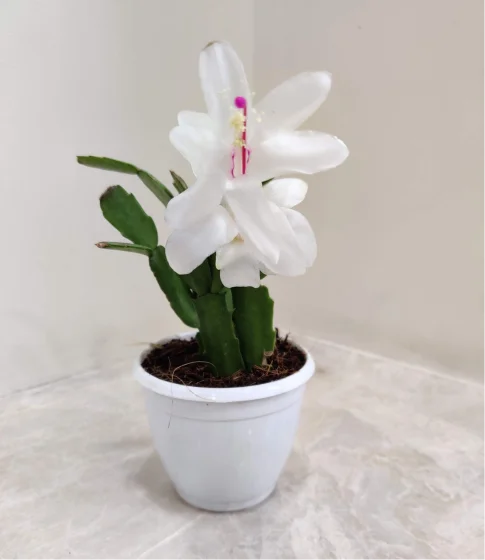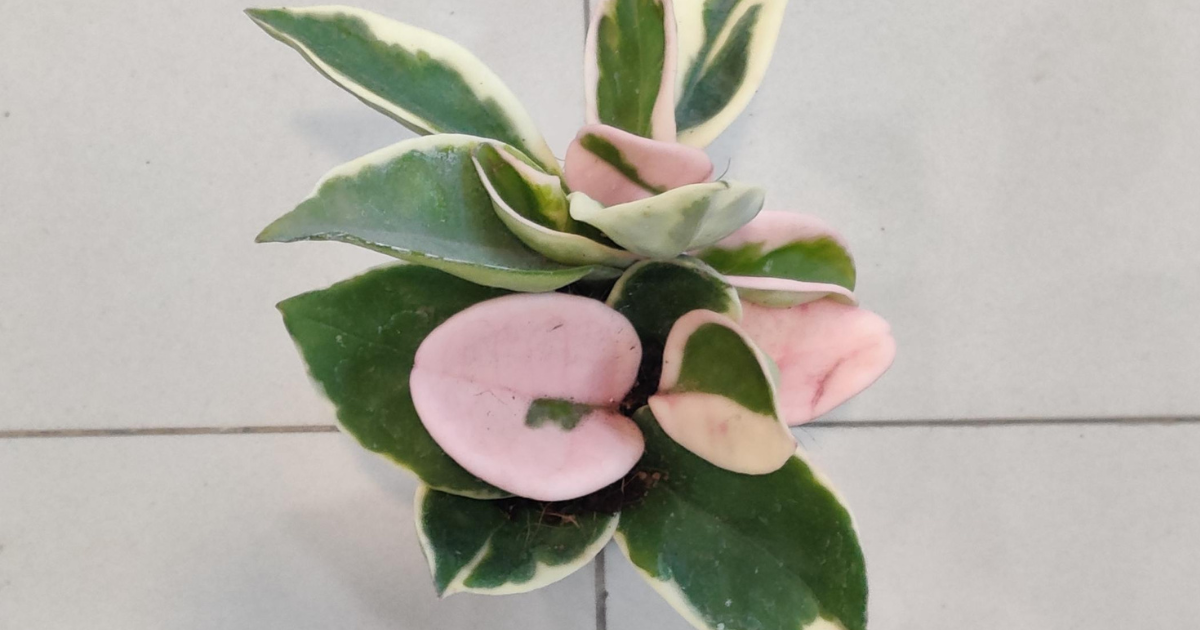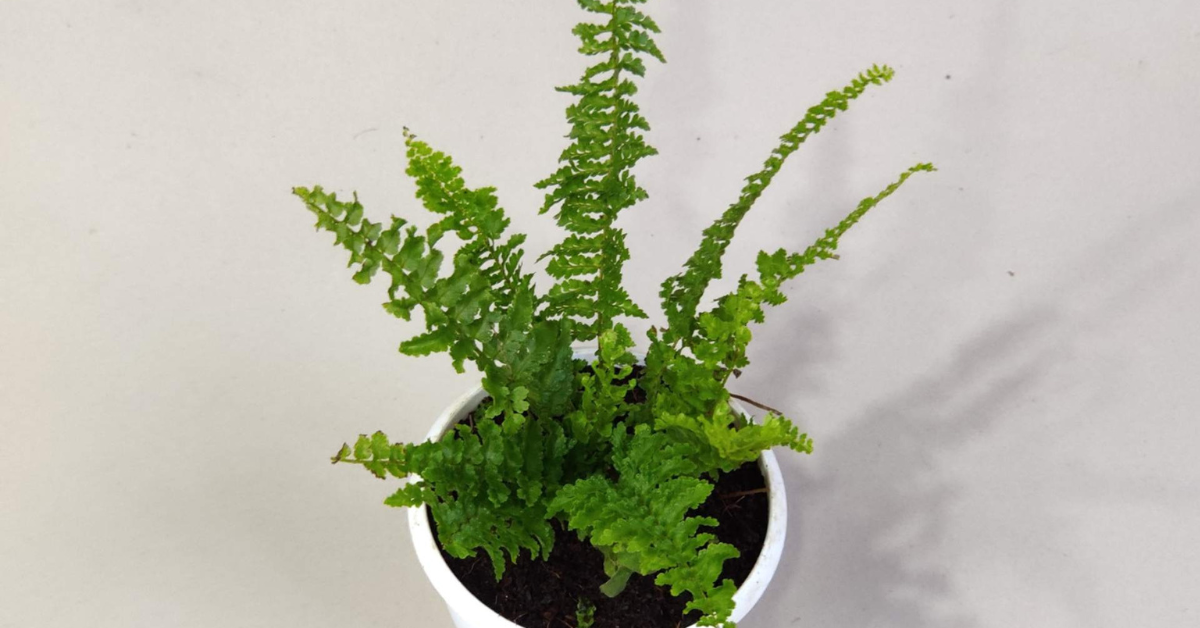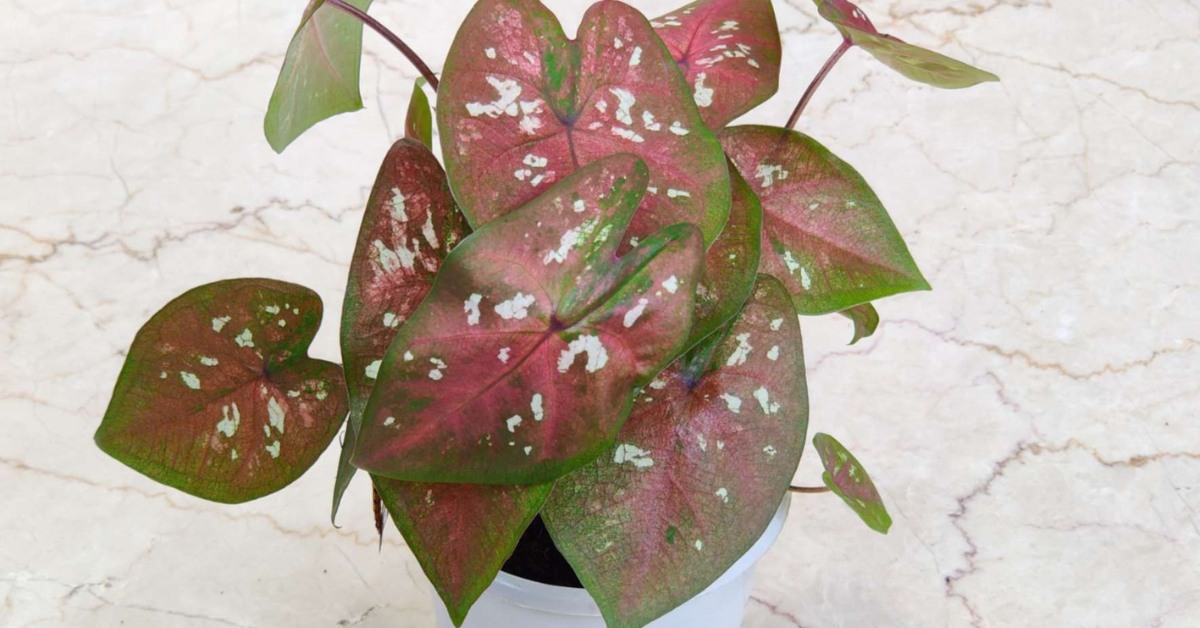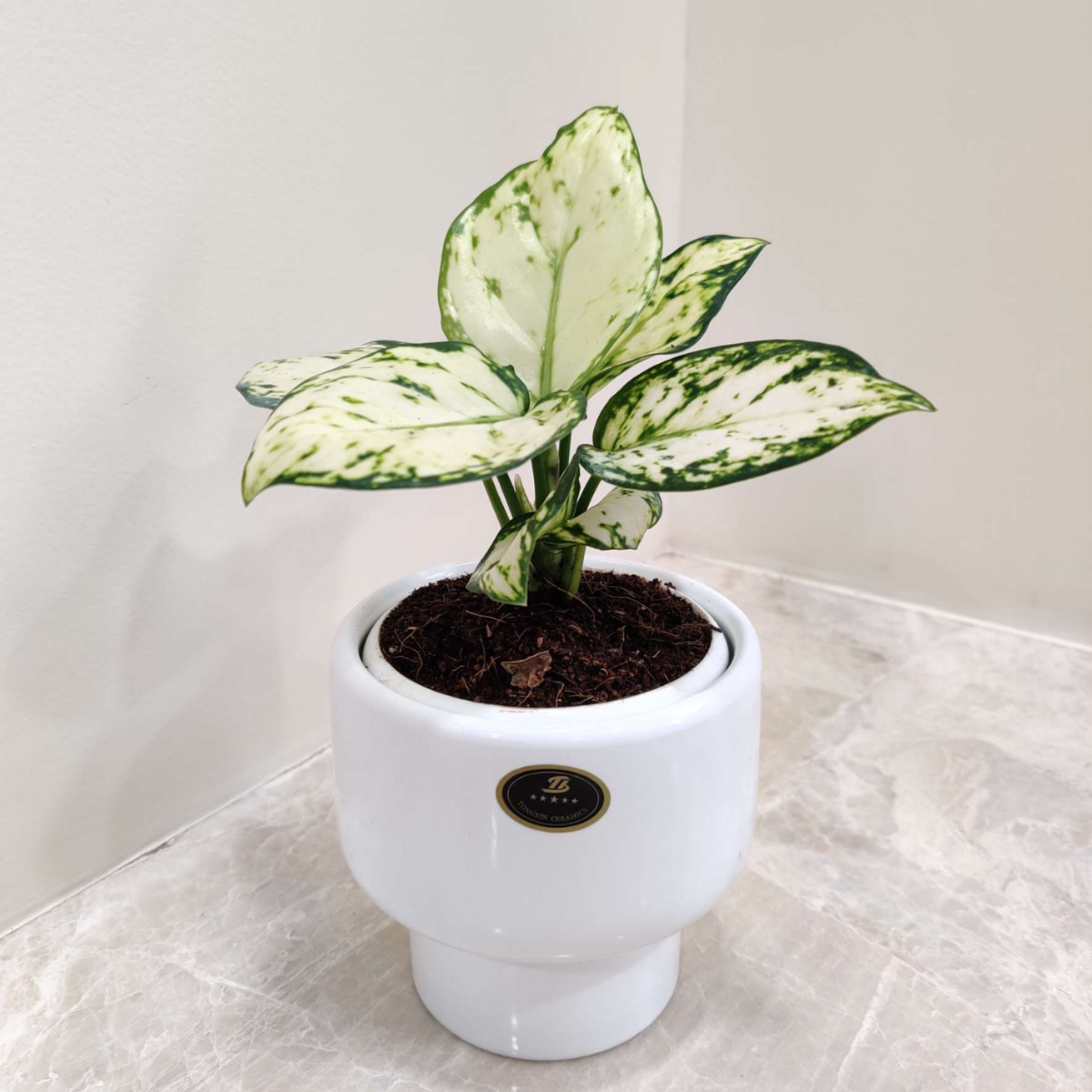

Christmas cactus plants are beloved indoor houseplants that bloom with stunning flowers around the holidays. But what happens when your cactus isn’t producing buds—or worse—when buds appear and then suddenly drop off?
We covers the top reasons your Christmas cactus isn’t blooming, In this comprehensive guide what causes bud drop, and exactly how to care for these tropical houseplants to ensure they bloom beautifully year after year. Whether you’re troubleshooting a fussy Schlumbergera or preparing it for its next blooming cycle, this guide delivers the plant care insights you need.
What Is a Christmas Cactus?
The Christmas cactus (Schlumbergera x buckleyi) is not your typical cactus. While technically part of the cactus family, it’s native to the cool, humid rainforests of Brazil, where it grows as an epiphyte on trees and rocks—not in the desert. That means its care needs are drastically different from spiny, drought-tolerant cacti.
To help your Christmas cactus bloom indoors, you must mimic its natural habitat, including:
- Cool night temperatures
- Bright, indirect light
- High humidity
- Shorter daylight hours in the fall
When Should Christmas Cactus Bloom?
True to its name, the Christmas cactus blooms between late November and January, depending on variety and conditions. It requires a triggering period in the fall to initiate bud formation, which includes:
- 12–14 hours of uninterrupted darkness per night
- Cooler nighttime temperatures (55–65°F or 13–18°C)
- A reduction in watering and fertilization
Failing to provide any of these cues may result in no buds or dropped buds.
Top Reasons Your Christmas Cactus Has No Buds
1. It’s Not the Right Season
Christmas cacti only bloom during the holiday season. If it’s spring or summer and your plant isn’t budding, don’t worry—it’s simply not its time. Some people confuse this plant with the similar-looking Thanksgiving or Easter cactus, which bloom at different times.
2.Too Much Light, Not Enough Darkness
Your cactus needs 12–14 hours of darkness per night for 6–8 weeks before blooming. If it’s in a room with lights on at night (even briefly), it won’t receive the signal to flower.
Solution:
- Move it to a dark room in the evening.
- Cover it with a box from 6 PM to 8 AM.
- Avoid streetlight exposure through windows.
3. Temperature Is Too Warm
Warm nights (above 70°F/21°C) prevent bud formation. Keep the plant in cooler conditions during the fall, especially at night.
Best Temperature Range:
- Day: 65–70°F (18–21°C)
- Night: 55–65°F (13–18°C)
Avoid placing it near heaters, fireplaces, or drafts, as sudden temperature changes may also cause bud drop.
4.Watering Mistakes
Overwatering leads to root rot, and underwatering causes stress—both interfere with blooming.
Watering Tips:
- Water when top 1–2 inches of soil are dry.
- Never let the soil stay soggy or bone dry.
- In fall, reduce watering slightly to simulate the natural dormancy signal.
5.The Pot Is Too Big
Christmas cacti bloom better when they are slightly pot-bound. If the pot is too large, the plant focuses on root growth rather than flowers.
Solution:
Only repot when the roots are tightly packed and preferably after blooming, not during bud development.
6.Frequent Relocation
Moving your cactus during the fall bud-formation period can cause stress and result in bud drop.
Solution:
- Once you see buds, leave the plant in place.
- Maintain consistent lighting and temperature.
7.Fertilizing at the Wrong Time
Too much nitrogen promotes leaf growth over flower production.
Fertilizing Schedule:
- Fertilize monthly from spring to August.
- Stop feeding by September.
- Resume fertilization in spring after blooming.
Use a balanced or phosphorus-rich fertilizer for flower development (like 10-10-10 or 10-30-10).
8.Soil and Nutrient Imbalance
Old, compacted soil or poor drainage can cause root stress and affect flowering.
Solution:
- Repot every 2–3 years in well-draining cactus mix.
- Ensure the pot has good drainage.
9.It’s Too Young
If your plant was recently propagated or repotted, it may need another year before it’s mature enough to bloom.
Why Christmas Cactus Buds Form—Then Suddenly Fall Off
It can be incredibly frustrating to see your Christmas cactus developing buds, only for them to wither and fall off before they ever bloom. This is known as bud drop, and while a small amount can be normal (especially after environmental changes), significant bud loss typically indicates that something in the plant’s care routine or environment is off balance.
Here’s a closer look at the most common causes of bud drop in indoor Christmas cactus plants, and what you can do to prevent it.
1.Sudden Environmental Changes
Christmas cacti are highly sensitive to changes in their environment, especially during the bud formation phase. Moving the plant from one room to another—where light, temperature, or humidity levels are different—can shock the plant and cause it to abort its buds as a survival mechanism.
Common Triggers Include:
- Moving the plant from outdoors to indoors without gradual acclimation
- Rotating or shifting the plant’s position (even a small change in orientation can stress it)
- Bringing the plant into a room with a different microclimate (e.g., from a humid bathroom to a dry living room)
Prevention Tips:
- Once your cactus begins forming buds, keep it in a consistent spot.
- If moving is necessary, do so before bud formation begins, ideally in late summer.
- Keep the same side of the plant facing the window to avoid light-shock.
2. Water Stress (Overwatering or Underwatering)
Inconsistent watering is one of the top causes of bud drop in Christmas cacti. These plants prefer a delicate balance—moist but well-draining soil, not soggy or bone dry.
- Overwatering causes root rot, a fungal issue that prevents roots from absorbing nutrients and water, weakening the plant and its buds.
- Underwatering causes the plant to go into preservation mode, redirecting energy from flowering to survival, leading to shriveled buds.
Signs of Trouble:
- Mushy stems and yellow leaves = overwatering
- Wrinkled, shriveled pads = underwatering
Prevention Tips:
- Water only when the top 1–2 inches of soil are dry.
- Ensure the pot has drainage holes and use well-aerated cactus mix.
- During bud development, slightly reduce watering frequency, but don’t let the soil completely dry out.
3.Warm Temperatures (Especially at Night)
Cool temperatures in the fall are critical for triggering blooming. However, if temperatures remain high—especially during the night—the plant may struggle to maintain its buds.
- Ideal night temperature: 55–65°F (13–18°C)
- Daytime temperatures: 65–75°F (18–24°C)
Warm nights above 70°F (21°C) can signal to the plant that it’s still in its growth phase, not bloom phase, resulting in stalled bud development or bud drop.
Prevention Tips:
- Place the plant in a cool, draft-free room during the fall and early winter.
- Keep away from heat vents, space heaters, fireplaces, and electronics.
- Avoid placing the plant in the kitchen where oven use might increase air temperature.
4. Too Much Artificial Light at Night
Christmas cacti are short-day bloomers, meaning they rely on 12–14 hours of uninterrupted darkness to initiate and sustain budding. Exposure to artificial lights—even briefly—can reset their bloom cycle and cause them to drop developing buds.
Problem Sources:
- Overhead lights in the room after sunset
- TV screens or digital displays near the plant
- Streetlights shining through uncovered windows
Prevention Tips:
- Turn off all room lights by 6–8 PM in the weeks leading up to bloom season.
- Cover the plant with a box or light-blocking cloth if you can’t darken the entire room.
- Move the plant to a spare room or closet each evening, but be consistent to avoid stressing it further.
5.Exposure to Drafts or Rapid Temperature Swings
While fresh air circulation is beneficial, sudden gusts of cold air or dry heat can cause shock and lead to premature bud drop.
Common Sources of Drafts:
- Open windows on chilly nights
- Drafty doorways
- Heating/air conditioning vents
- Ceiling fans
Symptoms of Draft Stress:
- Wilted, curling, or dropping buds and leaves
- General drooping or lack of vigor
Prevention Tips:
Use a humidity tray or room humidifier to buffer against drying indoor air.
Place your cactus away from entryways and vents.
Avoid rooms that are prone to frequent temperature swings (e.g., near garage doors).
How to Get Your Christmas Cactus to Bloom: Full Care Checklist
| Task | Timing | Why It Matters |
|---|---|---|
| Reduce watering | September–October | Mimics dry season and signals bud formation |
| Provide darkness | Fall (6–8 weeks) | Triggers flowering through shorter days |
| Lower night temps | Fall | Cool temps boost bud initiation |
| Stop fertilizing | Late August–September | Prevents leaf growth from overpowering bud formation |
| Use bright, indirect light | Year-round | Supports healthy growth and energy for blooms |
| Avoid movement | Budding through bloom | Stabilizes environment to prevent stress |
| Repot only after bloom | Every 2–3 years | Prevents root shock and supports long-term health |
| Monitor for pests | Ongoing | Stress from bugs weakens plant and prevents blooming |
Pests and Diseases That Impact Buds
Common Pests:
- Mealybugs: Cottony white bugs
- Scale: Sticky residue, dark bumps
- Spider mites: Webbing and yellowed leaves
Treatment:
- Spray with neem oil or insecticidal soap
- Dab bugs with alcohol-soaked cotton swabs
Root Rot:
Caused by overwatering. Roots turn brown and mushy, and the plant wilts.
Solution:
- Repot in fresh soil after trimming rotten roots
- Reduce watering frequency
Final Thoughts
Your Christmas cactus is a resilient and long-living houseplant, but it needs specific conditions to bloom successfully. By mimicking its rainforest origins—cool nights, short days, filtered light, and balanced watering—you’ll enjoy reliable blooms year after year.
Looking to buy blooming Christmas cactus plants online or upgrade your indoor plant collection? Explore our handpicked selection of flowering houseplants perfect for brightening your home.
FAQs
1. Can I force my Christmas cactus to bloom after Christmas?
A: No, once the bloom season is missed, the plant must wait until the next fall. Focus on year-round care.
2. Why do only a few buds form?
A: Sparse blooming is often due to inconsistent darkness, warm temps, or overfeeding in fall.
3. Do Christmas and Thanksgiving cacti need different care?
A: No. Both require the same light, water, and temperature conditions to flower.
4. Is my Christmas cactus dying if buds drop?
A: Not necessarily. Bud drop is reversible with better care. Check light, temp, and watering first.

Bring home the charm of low-maintenance beauty with our stunning cactus collection. Perfect for sunny windowsills, desks, or modern décor

